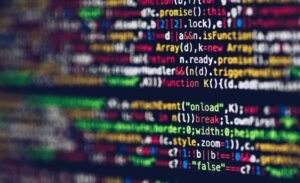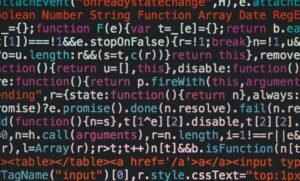Can Artificial Intelligence Take Over the World?
Artificial Intelligence (AI) has made significant advancements in recent years and is increasingly becoming an integral part of our daily lives. While AI has the potential to revolutionize various industries, concerns about its possible dominance over humanity have also emerged. Let’s explore whether AI can truly take over the world and the implications it may have.
Key Takeaways:
- AI advancements raise concerns about its potential to take over the world.
- Human oversight and ethics play a crucial role in preventing AI from gaining excessive power.
- AI is currently limited to specific tasks and lacks general intelligence.
- Collaboration between humans and AI can lead to significant advancements and benefits.
**While AI has made remarkable progress in specialized tasks**, such as image recognition, natural language processing, and even playing strategy games, it is important to note that AI lacks general intelligence. This means that AI excels at specific tasks but struggles with adapting to new situations or performing tasks outside of its programmed capabilities.
However, **the rapid advancement of AI technologies raises valid concerns**. As AI becomes more complex and powerful, the possibility of unintended consequences or misuse cannot be ignored. It is crucial to establish regulations and enforce ethical guidelines to prevent any misuse of AI and ensure that it remains subservient to human control.
AI Capabilities and Limitations:
- AI is proficient in handling repetitive and data-intensive tasks.
- AI lacks creativity, intuition, and emotional understanding.
- AI currently relies on data and algorithms, limiting its decision-making capabilities.
**One fascinating aspect of AI is its ability to process large amounts of data efficiently**. This makes AI well-suited for tasks that require analyzing vast data sets and identifying patterns. However, **AI lacks the human qualities of creativity, intuition, and emotional understanding**. These human qualities are vital in many areas of life, such as artistic expression, empathy, and moral reasoning.
The Role of Human Oversight:
- Humans need to set the boundaries and goals for AI systems.
- Regular monitoring and auditing of AI systems are necessary.
- Ethical guidelines should govern the development and use of AI.
**The presence of human oversight is crucial to prevent any potential misuse of AI**. As AI systems become more capable, it is important for humans to set the boundaries and goals for AI. Technologies like facial recognition have sparked concerns about privacy and surveillance, highlighting the necessity for regular monitoring and auditing of AI systems.
| Factors | Human Intelligence | Artificial Intelligence |
|---|---|---|
| Learning | Flexibility and adaptability | Data-driven and algorithmic |
| Decision Making | Evaluate based on values, intuition, and emotions | Based on programmed instructions and data |
| Generalization | Ability to apply knowledge to new situations | Limited to programmed capabilities |
| Industry | AI Applications |
|---|---|
| Healthcare | Medical image analysis, disease diagnosis |
| Finance | Algorithmic trading, fraud detection |
| Transportation | Autonomous vehicles, route optimization |
The Future: Collaboration, not Dominance
- AI can enhance human capabilities and improve efficiency.
- Collaboration between humans and AI can lead to breakthroughs in various fields.
**The future lies in collaboration between humans and AI**. Through this partnership, AI can enhance human capabilities and improve efficiency in various fields. AI-driven technologies can be used in healthcare to provide more accurate diagnoses or in transportation to create safer and more efficient systems. **Human oversight and ethical guidelines will be key in managing this collaboration effectively**.
In conclusion, while the fear of AI taking over the world is a valid concern, the reality is that AI currently lacks the general intelligence and human qualities necessary for complete dominance. By establishing regulations, enforcing ethical guidelines, and promoting collaboration between humans and AI, we can harness the potential of AI while ensuring that it remains subservient to human control.

Common Misconceptions
Artificial Intelligence Take Over the World
Misconception 1: AI will completely replace human intelligence
One common misconception about artificial intelligence is that it has the potential to completely replace human intelligence and take over the world. While AI has made significant advancements in various fields, it is important to understand that it is not designed to replicate human intelligence entirely. AI is created to perform specific tasks more efficiently and accurately than humans, but it lacks the emotional and creative capabilities that are unique to humans.
- AI is built to assist humans, not replace them.
- Human intelligence encompasses complex emotions and creativity, which AI currently cannot replicate.
- AI is capable of learning and improving, but it still relies on human input and supervision.
Misconception 2: AI will have malicious intent and try to harm humans
Another common misconception is that AI will have malicious intent and seek to harm humans. This perception is often fueled by science fiction movies and novels that portray artificial intelligence as villainous and intent on world domination. However, it is crucial to understand that AI systems are created and programmed by humans and operate based on the guidelines and limitations set by their human creators. The possibility of AI developing malevolent intent is highly unlikely as long as it is ethically designed and implemented.
- AI operates based on its programming and cannot develop intent on its own.
- The ethical design and implementation of AI systems minimizes the risk of malicious intent.
- AI can be used to enhance various aspects of human life, such as healthcare and education.
Misconception 3: AI will lead to widespread unemployment and job loss
Many people believe that the rise of AI will result in widespread unemployment and job loss as machines take over tasks traditionally performed by humans. While it is true that certain job roles might become automated, AI also has the potential to create new job opportunities and increase productivity in various sectors. By automating repetitive and mundane tasks, AI can free up human workers to focus on more complex and creative aspects of their work. Additionally, the development and maintenance of AI systems require skilled professionals, leading to the creation of jobs in the AI industry.
- AI can automate repetitive tasks, allowing humans to focus on higher-value work.
- New job opportunities can emerge in the AI industry and supporting sectors.
- AI has the potential to improve productivity and efficiency in various industries.
Misconception 4: AI is infallible and always makes accurate decisions
There is a misconception that AI is infallible and always makes accurate decisions. While AI can process vast amounts of data and perform complex calculations at a speed beyond human capabilities, it is not immune to errors. AI systems heavily rely on the quality of their input data and algorithms, which can introduce biases and inaccuracies. Additionally, AI may face challenges when confronted with novel or unpredictable situations that were not encountered during its training. Therefore, it is crucial to ensure proper training, testing, and monitoring of AI systems to mitigate errors.
- AI systems can be prone to errors and biases present in their input data or algorithms.
- Proper training, testing, and monitoring are necessary to mitigate potential inaccuracies.
- AI performs best within well-defined and predictable problem domains.
Misconception 5: AI will have control over all aspects of human life
The final misconception is the fear that AI will have complete control over all aspects of human life. While AI can assist in decision-making processes, it is incapable of exercising autonomous control without human intervention. Humans will always remain in control of the deployment, governance, and regulation of AI systems. Ethical considerations, legal frameworks, and human judgment will continue to play a vital role in ensuring AI is used responsibly and with respect for human values and rights.
- Humans retain control over the deployment and regulation of AI systems.
- Ethical considerations and legal frameworks guide the responsible use of AI.
- Human judgment and values remain essential in decision-making involving AI systems.

Table: AI Market Size
With the rapid advancements in technology, the artificial intelligence market has been growing exponentially in recent years. This table highlights the projected market size and compound annual growth rate (CAGR) of the AI industry.
| Year | Market Size (USD Billion) | CAGR |
|---|---|---|
| 2016 | 1.95 | – |
| 2017 | 2.62 | 36.6% |
| 2018 | 4.06 | 55.3% |
| 2019 | 7.35 | 44.7% |
| 2020 | 14.71 | 50.2% |
Table: AI in Medicine
The use of artificial intelligence in the medical field has immense potential to revolutionize healthcare. This table showcases some remarkable applications of AI in medicine.
| Application | Description |
|---|---|
| Medical Imaging | AI algorithms assist radiologists in interpreting medical images more accurately, leading to enhanced diagnoses. |
| Drug Discovery | AI helps analyze huge datasets to identify potential drug candidates and predict their effectiveness. |
| Robot-Assisted Surgery | Surgeons utilize robotic systems to perform minimally invasive procedures with greater precision. |
| Predictive Analytics | AI algorithms can predict patient outcomes, identify early signs of diseases, and aid in personalized treatments. |
Table: Common AI Techniques
Artificial intelligence encompasses a wide range of techniques. This table provides an overview of popular AI techniques and their functions.
| Technique | Function |
|---|---|
| Machine Learning | Enables systems to learn from data and improve performance without explicit programming. |
| Natural Language Processing | Enables computers to understand, interpret, and generate human language. |
| Computer Vision | Empowers computers to analyze and extract information from visual data. |
| Expert Systems | Emulates human expertise in a specific field to provide solutions or make decisions. |
Table: AI Ethics Frameworks
As AI becomes more pervasive, ethical considerations are paramount. This table presents various frameworks proposed to guide responsible AI development and deployment.
| Framework | Description |
|---|---|
| The European Commission’s Ethics Guidelines for Trustworthy AI | Offers guidance regarding the design, development, and implementation of AI systems based on ethical principles. |
| The IEEE Global Initiative on Ethics of Autonomous and Intelligent Systems | Aims to promote safe and beneficial AI development through the establishment of ethical standards. |
| The Asilomar AI Principles | An outlined set of principles addressing AI’s ethical impact on society, covering areas such as safety, value alignment, and governance. |
Table: AI Displacement & Job Creation
The impact of AI on the job market has been the center of much debate. This table examines AI’s potential to displace jobs while also creating new roles.
| Job Type | Potential for Displacement | Potential for New Jobs |
|---|---|---|
| Manual Labor | High | Low |
| Data Entry & Processing | High | Moderate |
| Robotics/AI Engineering | Low | High |
| Data Science | Low | High |
Table: AI in Popular Culture
Artificial intelligence has long been a fascination in popular culture. This table highlights some iconic representations of AI in books, movies, and TV shows.
| Medium | Representation |
|---|---|
| Book | HAL 9000 from “2001: A Space Odyssey” by Arthur C. Clarke |
| Movie | Skynet from “The Terminator” series |
| TV Show | Data from “Star Trek: The Next Generation” |
Table: AI Supercomputing Power
AI requires immense computing power to process vast amounts of data. This table compares the performance of some of the most powerful supercomputers used for AI.
| Supercomputer | TFLOPS (Teraflops) |
|---|---|
| Summit (Oak Ridge National Laboratory) | 148,600 |
| Sierra (Lawrence Livermore National Laboratory) | 94,640 |
| Sunway TaihuLight (National Supercomputing Center in Wuxi, China) | 93,014 |
| Fugaku (RIKEN and Fujitsu) | 442,010 |
Table: AI Power Consumption
AI’s energy consumption has become a concern due to environmental impact. This table compares the estimated power consumption of various AI systems.
| AI System | Power Consumption (Megawatts) |
|---|---|
| Human Brain | 20 |
| AlphaGo (Google DeepMind) | 0.5 |
| OpenAI’s GPT-3 | 6.3 |
| Supercomputer Summit (Oak Ridge National Laboratory) | 15,284 |
Table: AI and Global Military Spending
Several nations invest substantial funds in AI for military applications. This table showcases the countries with the highest military expenditure and their AI investment.
| Country | Military Expenditure (USD Billion) | AI Investment (USD Billion) |
|---|---|---|
| United States | 684.6 | 8.5 |
| China | 215.2 | 4.8 |
| India | 72.9 | 0.7 |
| Russia | 61.6 | 1.9 |
Artificial intelligence holds immense promise but also raises significant concerns. As evident from the information presented in the tables, AI’s market size has skyrocketed, and its applications in medicine, popular culture, and various industries are numerous. However, ethical considerations, job displacement potentials, and environmental impact must also be taken into account. Striking a balance between harnessing the potential of AI and addressing these concerns will be crucial to ensure a future where AI positively impacts human society.
Frequently Asked Questions
Will artificial intelligence surpass human intelligence?
While advancements in AI have been remarkable, creating AI systems that surpass human intelligence in all aspects of cognition remains a complex challenge. Developing general AI that can replicate human capabilities across various domains is yet to be achieved.
What are the potential risks associated with artificial intelligence?
Concerns regarding AI’s potential risks include a loss of jobs due to automation, AI systems making biased decisions, and the potential for AI to be used for malicious purposes. However, these risks can be mitigated through thoughtful regulation, ethical guidelines, and responsible development.
Can AI become self-aware and conscious?
At present, AI lacks the capability to possess self-awareness or consciousness. AI algorithms and systems are designed to process data and learn patterns, but they do not possess subjective experiences or conscious awareness like humans do.
Are there any ethical concerns associated with AI development?
Yes, there are ethical concerns associated with AI development. These include issues such as data privacy, transparency of AI decision-making processes, algorithmic bias, and the impact of automation on employment. Addressing these concerns requires ongoing dialogue, collaboration, and the formulation of balanced policies.
What are the limitations of artificial intelligence?
AI has several limitations, such as a lack of common sense reasoning, difficulty understanding context, and the reliance on large amounts of labeled data. AI systems can also be vulnerable to adversarial attacks and may struggle to handle unexpected situations outside their training data.
Is there any chance of AI becoming malevolent or turning against its creators?
The possibility of AI becoming malevolent or turning against its creators is a topic of speculation and a subject explored in science fiction. However, current AI systems are designed to operate within defined boundaries and lack the capacity for self-awareness or independent intentions.
Can AI exhibit creativity and emotional intelligence?
While AI can demonstrate capabilities in generating novel outputs or mimicking emotions, it is fundamentally different from human creativity and emotional intelligence. AI relies on algorithms and statistical modeling rather than possessing genuinely original or subjective experiences.
What steps are being taken to ensure responsible AI development?
Researchers, policymakers, and tech companies are actively working to ensure responsible AI development. Initiatives include transparency in AI systems, incorporating ethical considerations into the design process, promoting diversity in AI teams, and enacting regulations to protect against potential misuse of AI technologies.
Could AI replace human jobs entirely?
AI has the potential to automate certain tasks, leading to changes in the workforce. While some jobs may be replaced by AI, new opportunities for human workers are expected to emerge. Skilled tasks involving complex decision-making, creativity, and empathy are less likely to be entirely replaced by AI.
Who is responsible if AI makes a mistake or causes harm?
Determining responsibility in cases where AI makes a mistake or causes harm is a complex issue. Responsibility could fall on developers, operators, regulators, or even the individuals or organizations utilizing the AI system. Establishing clear policies, accountability frameworks, and legal frameworks is crucial to address these challenges.




